Meditation Homework for Daily Life
Integrating Meditation in Daily Life
The “10 Homework” is technique to the inner happiness, to the fruitful of meditation, to be beloved person. The ten items of homework are a practical way to integrate meditation in one’s daily life – helping to supplement the progress in mental development gained by doing meditation on a daily basis while helping to add value to our daily lives – especially since the tranquility one has inside tends to lead us towards increased wisdom, satisfaction and prosperity in life. Achieving all ten items of homework on a daily basis a shortcut to tranquility throughout the day, gradually bringing with it all the other benefits mentioned in a way that will be easily apparent to the practitioner certainly because sediment from non-beauty in life will be gradually diminish. A detailed description of the ten items of homework – how they are practiced and their benefits – is shown below:
1. Make the effort to see the virtues in yourself and others. Congratulate others on their virtues and give them the opportunity to congratulate you on yours:
Sharing merit with those at home means looking for ways of applying our cheerfulness, love and compassion of mind to enhance the positive mood of others at home, by cheering them up with appreciation for the good deeds we have had the good luck to accomplish throughout the day. The ability to bring one’s good deeds out in the open, with the confidence to have other people congratulate you on them, helps reinforce one’s commitment to good deeds in a way that boosts one’s quality of mind with refreshedness which helps one cope cheerfully and compassionately with all the situations of life.
Benefits to practitioner
1. The merit (positive energy from having done good deeds) will continue to nourish body, speech, and mind all the way home.
2. The merit already accrued will be multiplied further through the joy one takes in the merit one has done and looking forward to sharing our experiences with others at home.
3. If we are able to maintain our subtlety of mind, with our attention at the center of our body all the way back home, our inner experience will progress and our merit will increase not to mention forging a positive mood for our family at home.
4. If we succeed in this item of homework the chain of merit created will be continuous. The meritorious awareness we forge in those around us will eventually come back to consolidate us further.
Benefits to others
1. Our loved ones and family who haven’t had the same opportunities to go out and do meritorious deeds because of their duties still have the opportunity to accrue merit by the method of ‘rejoicing in the merit of others [anumodaana].
2. When our loved ones are able to pick up on the positivity of others in our family who have had the chance to do more meritorious deeds than themselves will enable them to go back to their respective duties cheerfully, inspiring them with the qualities of satisfaction and appreciation.
3. The mood of cheerfulness, smiles and endearing speech that arises naturally in the home as a result of practicing this item of homework helps to minimize fault-finding directed at ourselves, our spiritual teachers or Buddhism in general.
4. Reduces the any tendency for our loved ones to succumb to unwholesome behaviors.
5. Facilitates a constant flow of merit for everyone at home, fostering an atmosphere of improvement at home attracting good events happen in the family all because of the simple act of having family members appreciate the merit we have done on our arrival home.
Details of practice
Whenever the teaching monk gives the blessing at the conclusion of our meritorious deed, we should make the wish that the merit accrued be potent in bringing fulfillment and success to both ourselves and those back home.
At the time you have others rejoice in your merit, make sure your own mind is softly located at the center of your body with whatever level of inner experience you have attained for yourself. Avoid getting drawn into arguments, speculative debates or any issues to perturb the mind before or during the time you have others rejoice in your merit.
Restrict yourself to only useful and positive words and don’t forget to smile!
1. Make the effort to see the virtues in yourself and others. Congratulate others on their virtues and give them the opportunity to congratulate you on yours:
Sharing merit with those at home means looking for ways of applying our cheerfulness, love and compassion of mind to enhance the positive mood of others at home, by cheering them up with appreciation for the good deeds we have had the good luck to accomplish throughout the day. The ability to bring one’s good deeds out in the open, with the confidence to have other people congratulate you on them, helps reinforce one’s commitment to good deeds in a way that boosts one’s quality of mind with refreshedness which helps one cope cheerfully and compassionately with all the situations of life.
Benefits to practitioner
1. The merit (positive energy from having done good deeds) will continue to nourish body, speech, and mind all the way home.
2. The merit already accrued will be multiplied further through the joy one takes in the merit one has done and looking forward to sharing our experiences with others at home.
3. If we are able to maintain our subtlety of mind, with our attention at the center of our body all the way back home, our inner experience will progress and our merit will increase not to mention forging a positive mood for our family at home.
4. If we succeed in this item of homework the chain of merit created will be continuous. The meritorious awareness we forge in those around us will eventually come back to consolidate us further.
Benefits to others
1. Our loved ones and family who haven’t had the same opportunities to go out and do meritorious deeds because of their duties still have the opportunity to accrue merit by the method of ‘rejoicing in the merit of others [anumodaana].
2. When our loved ones are able to pick up on the positivity of others in our family who have had the chance to do more meritorious deeds than themselves will enable them to go back to their respective duties cheerfully, inspiring them with the qualities of satisfaction and appreciation.
3. The mood of cheerfulness, smiles and endearing speech that arises naturally in the home as a result of practicing this item of homework helps to minimize fault-finding directed at ourselves, our spiritual teachers or Buddhism in general.
4. Reduces the any tendency for our loved ones to succumb to unwholesome behaviors.
5. Facilitates a constant flow of merit for everyone at home, fostering an atmosphere of improvement at home attracting good events happen in the family all because of the simple act of having family members appreciate the merit we have done on our arrival home.
Details of practice
Whenever the teaching monk gives the blessing at the conclusion of our meritorious deed, we should make the wish that the merit accrued be potent in bringing fulfillment and success to both ourselves and those back home.
At the time you have others rejoice in your merit, make sure your own mind is softly located at the center of your body with whatever level of inner experience you have attained for yourself. Avoid getting drawn into arguments, speculative debates or any issues to perturb the mind before or during the time you have others rejoice in your merit.
Restrict yourself to only useful and positive words and don’t forget to smile!
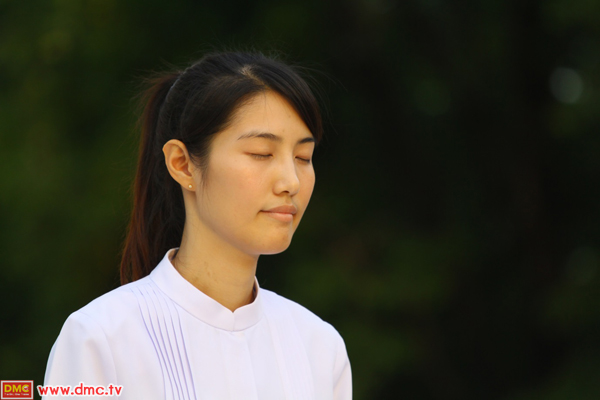
2. Keep daily notes of your meditation experience in a diary:
Taking notes of our inner experience or keeping a meditation diary will allow our practice to improve without end. Keeping such notes helps us to reflect back over the inner experiences we have achieved in our meditation – the more we reflect in such a way, the more merit will arise for us. Re-reading our notes helps us to achieve consistency in our Dhamma practice and allow our understanding of it to become more profound. This will allow us to adjust the balance of our meditation more accurately, understand and overcome obstacles in meditation more easily. We will gain the know-how of the sort of mood that allows us to progress in our practice and the sort of hindrances that cause us to lose our subtlety of mind.
Benefits to practitioner
1. Progress will be made in our meditation practice every day.
2. We will become more adept in balancing ourselves and our mood in relation to the meditation.
3. Fosters an understanding of adjusting our approach to meditation and helps us to reflect more accurately upon ourselves.
4. Every entry in our diary helps us to review our meditation practice. As meditation is a meritorious deed, recollection of this merit causes the merit to be multiplied further – enhancing the radiance, clarity and wisdom of mind we bring to the meditation.
Benefits to others
1. The improvements we make to ourselves and our working and daily lives as a result of self-reflection will have advantages that extend to those around us too.
2. Helps us to be more open and responsive to the criticism and suggestions of those around us.
3. We will be more thorough in our dealings with the world, reducing the causes of potential conflict with those around us.
Details of practice
Keep your meditation diary in a place where it is easily seen, on a table we use regularly, with a pen near at hand. We should take a wash or a shower to put ourselves in the right mood and relax before making an entry. On returning home it would be selfish just to go about our own business paying no attention to anyone else in our family. Thus, it would be better to sit down with one’s diary only when we have made sure everything and everyone else is in order – in that way we will be able to reflect more clearly when we think back over our meditation – our becoming automatically more radiant.

3. Before going to sleep, recollect the good deeds you have done throughout the day:
Every night before going to sleep or before going to bed one should recall all the good deeds one has done throughout the past day, week, month or year. One should begin with the good deed that made the biggest impression on our mind, picking up on the joy of the feeling produced – and that joy will automatically attract the merit of other good deeds into a continuous train of thought which is accompanied by pride, joy and refreshedness. Recalling one’s good deeds before sleep is important because on remembering the major meritorious deeds we have done, the feeling arising will help to make us aware also of the smaller meritorious deeds we may have done but forgotten. Within only a few minutes our mind, specifically the center of the body will take its place at the center of all merit we have done in the past. When the merit gathers in this way, radiance will arise at the center of the body. If you have the opportunity at this occasion, you can watch a video or look at pictures of a particular meritorious occasion you can remember or alternatively simply imagine yourself back in time and mood to that occasion – this will help you broaden your recall and remember further details of the meritorious deeds you did. This item of homework benefits both ourselves and others in the following ways:
Benefits to practitioner
1. The stream of merit created by practicing this item of homework helps eliminate worry and anxiety from the mind – so that the mind is calm and free of tension before sleep.
2. Fills us with confidence as to the worth of our life each day, while inspiring us to further our merit to even greater heights on subsequent days. If these thoughts were the last thing on our mind before we died – supposing we were to fall asleep and never wake up again – such thoughts would ensure our rebirth in a fortunate realm.
3. Protects us from nightmares.
4. Ensures our personal safety and protection wherever we may sleep.
Benefits to others
1. Absence of restlessness on our part allows others sleeping nearby to sleep in peace.
2. Absence of talking in one’s sleep, nightmares etc. allows others to sleep soundly too.
Details of practice
Before lying down to go to sleep, sit up in bed. Drink a glass of warm water while recalling your good deeds continuously until lying down to go to sleep. Alternatively, for those who bow at their pillow before sleep, listen to a recording of ‘sorapanya’ chanting in praise of the Triple Gem – the sound will help us to focus our mind on all the meritorious deeds we have done throughout the day. Start by recollecting the meritorious deeds that have made the biggest impression on you or which bring you the most joy in retrospect – perhaps deeds like having led a Kathina ceremony, having offered robes, having enshrined Buddha images or donated temple buildings like pavilions or pagodas in your favorite temple. The effect of recollecting one’s merit can be multiplied further if one makes a resolve on the basis of one’s good deeds while calling upon the Perfections [paaramitaa] of one’s root teachers’ Perfection to consolidate our own merit by imagining our root teacher at the center of our body or feel that we are at their center.
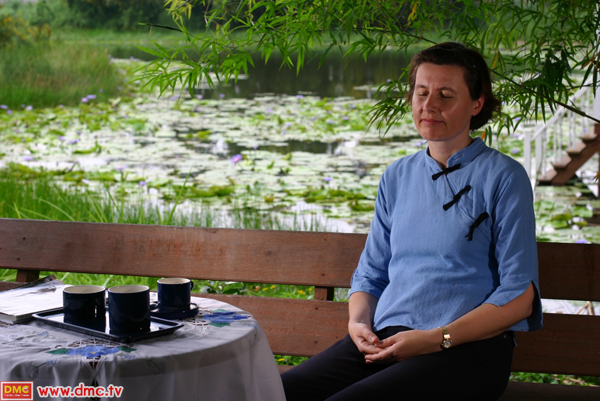
4. Center your mind before falling asleep:
This means making sure that we bring our mind to the center of the body before we fall asleep so that our mind is immersed in the light and joy there, after having reflected on all the good deeds we have done.
Benefits to practitioner
1. Getting to sleep quickly, sleeping soundly and deeply with no anxieties to cause restlessness, talking on one’s sleep or nightmares.
2. Dreamless sleep without waking up in the middle of the night – which will allow us to rest both body and mind to the full.
3. Even while we sleep the stream of our merit will continue to nourish us – so that the merit will protect us as we sleep, wherever we may take our rest. Although the time we are asleep is full of risks, the merit in our mind makes up for our unconsciousness.
4. As a meditator, our inner experience will not backslide even when we are asleep.
5. Strong health, not waking up in the middle of the night, or even if one does wake up, one can get back to sleep quickly.
Benefits to others
1. Allows others sleeping nearby to sleep in peace.
2. Allowing others to wake up in a good mood and maintain a good mood all day long.
3. Allowing others greater efficiency at work – refreshed from having had a full night’s rest – using both body and mind to their full potential.
Details of practice
Having recollected all the merits of the day, one should touch one’s mind softly at the centre of the body, at the point from where the joy emanates. Centering the mind in this way will create the subtlety of mind and the right mood to envelop the whole of oneself in a feeling of weightlessness, ease, relaxation and light. Make the resolution or gentle intention to fall asleep at the center of this gentle and joyous light. At the same time we should avoid watching perturbing movies, shows or entertainment immediately before going to bed, excepting media concerned with merit-making because otherwise our mind will get caught up in the negativity of the media content, interrupting the continuity of the flow of merit in our mind before bed.
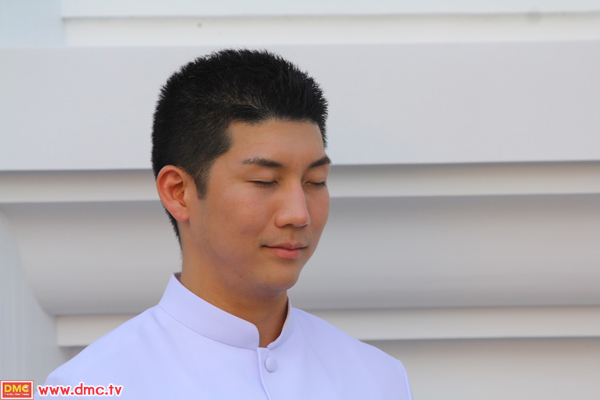
5. Upon waking, immediately reconnect your attention with the center of the body:
On waking our mind should still be immersed in the brightness at the center of our body – finding us in a good mood from the moment we wake with consciousness as to all the good deeds one has done in the past – the new day holding the possibility to improve further upon one’s track record of good deeds from the past.
Benefits to practitioner
This item of homework will train us to be mindful, waking in mindfulness – greeting the new day without reluctance, drowsiness or dizziness. The first thing on one’s mind when one wakes should be thoughts of good deeds. If good things are at the top of one’s mind, it will help to attract similar things into our life.
Therefore, waking with our mind focused on merit our new day is guaranteed to fill with meritorious deeds; the bad things temporarily forgotten because our focus is on merit instead. Whenever merit predominates in the mind, unwholesome intentions have to take a back seat. This ensures that each new day promises to hold more good deeds than the previous.
Benefits to others
1. Creates a positive and pleasant atmosphere for those close to us at home.
2. Sets a positive mood for the home.
3. Boosts morale mutually between family members – especially for those who are feeling down – because often the morale of the family reflects our own. If a family is in good cheer from the moment they get up, often they will be cheerful the whole day.
Details of practice
Usually, if one has practiced all the first four items of homework (or even two or three of them) before going to bed, this alone will enable us to wake up with our mind already centered – unless we have woken up moody in the middle of the night and have not recentered our mind before going back to sleep. To practice this item of homework properly, the moment we wake up, we should recall the joy and brightness of merit we were thinking about before we fell asleep. We should re-align our mind with that feeling. (If for some reason we had not centered our mind before falling asleep, we should be quick to do so when we wake up, instead), allowing the soft, and refreshing light at our center gently to permeate the whole of our body and mind until we feel cleansed and pure.
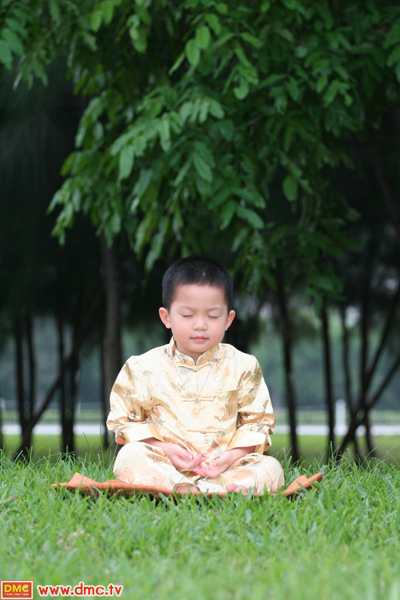
6. Before getting up, taking a minute to re-unite your mind with the mental object at the center of your body and recollecting that you are lucky still to be alive, reminding yourself that one day in the future you must die for sure, spreading loving-kindness to all living beings in the world:
The first thing to do immediately after waking up in the morning is to spend one minute thinking of one’s mental object at the center of the body. During that minute we should remember that we are lucky still to be alive and remind ourselves that one day in the future we must die for sure, spreading loving – kindness to all living beings in the world. Having woken up with our mind at the centre of the body, we should wish the best on ourselves for the whole of the day. No gift is more precious for us than a bright clear mental object (whether it be a crystal ball or a crystal Buddha image) – which is the symbol of prosperity and security – a symbol of our true aim in life and a symbol of the way to strive towards the ultimate aim in life.
The symbol of the Buddha Image in Buddhism is derived from the form of an inner body nested inside every human body which can be attained by bringing the mind to a standstill at the seventh base of the mind. This inner body is the same as the body of enlightenment attained by the Lord Buddha and all the enlightened ones. For ‘worldlings’ like ourselves to attain the condition of enlightenment, we must first attain this inner body. The Buddha is more than just a statue shaped like a Buddha. Many Buddha images we see today have more to do with the imagination of the sculptor than they have towards the real likeness of what we mean by ‘Buddha’. The original Buddha Image or Buddha Body arises on the strength of our inner experience (Dhamma) and embodies our inner experience at a level which represents the highest level of purity where it is possible to become a Buddha or an arahant. Hence, the Buddha body can also be called the body of enlightenment which in the Pali language is referred to as the “Dhamma Body” or “Dhammakaaya” of the Lord Buddha.
The Buddha Image or the Dhamma Body is (usually) not meant to represent the physical body of the Lord Buddha, but rather the inner bodies nested inside the physical body of Prince Siddhartha while he attained the Dhammakaaya, and used Dhammakaaya to examine higher teachings to attain the path and fruit of the arahant
Dhamma body – something which is beyond the reach of mundane comprehension or conventional methods of study. The “Dhammakaaya” was rediscovered by the meditation master Phramonkolthepmuni (Sodh Candasaro), the late abbot of Wat Paknam Bhasicharoen. Through his compassion, this monk devoted the rest of his life to teaching and furthering the depth of knowledge of this meditation technique. It is this technique which has known as “Dhammakaya meditation” (i.e. meditation for attaining the Dhammakaya).
He devoted his time to research the insights of Dhammakaya meditation and refined the technique to make it more systematic, through experimenting with the ways the meditation could best be applied for the common good. During an exceptionally long ministry of over half-a-century, Phramonkolthepmuni was unflagging in teaching allcomers the way to attain to Dhammakaya and the correct characteristics of the thirtytwo signs of the Great Man [mahaa-purisalakkha.na] of the Dhamma body – allowing future generations accurately to sculpt or draw the Dhamma body to be used as an object of meditation.
In the present day, Phrarajbhavanavisudh3, teaches Buddhist meditators to use such a Buddha Image or image of the Dhamma Body as their object of meditation when conducting the ten items of homework – and the suggestions in this course unit follows his current recommendations in this respect.
Thus through the power of recollecting the Buddha image (or our other chosen object of meditation) in the centre of the body, loving-kindness will naturally spread forth to all other beings sharing the plight of birth, old-age, sickness and death with us in the cycle of existence. Furthermore, this practice expresses gratitude to the Buddha for having discovered, cared for and taught the Middle Way which has continued to channel merit through our veins even while we were asleep.
Furthermore, the Dhammakaya serves to remind us that for as long as we have not become an arahant ourselves, we must continue to transmigrate in the cycle of existence. We have no idea when death will come to us, therefore we must not be reckless and should be committed to doing good deeds today in the day ahead to prepare ourselves for the dangers that certainly lie ahead of us in the course of living and dying.
Recollection of the body of enlightenment is our guarantee that the Buddha will offer protection throughout the day, bringing only good things into our lives. Thus, the day ahead will be lived out in safety – the good things in our mind causing all undesirable things in life to keep their distance from us.
Benefits to practitioner
1. Training ourselves in mindfulness, boosting our morale and increasing our capacity for loving-kindness.
2. Being endearing to others people and angels alike – and being blessed with a good complexion.
3 the abbot of Phra Dhammakaya Temple, the president of the Dhammakaya Foundation
3. Training ourselves in generosity.
4. Avoiding recklessness – one’s thoughts never straying far from the Buddha and his qualities – because he is always present at the center of one’s body.
5. Having clear purpose in life every day.
6. Continuous progress in meditation.
Benefits to others
1. No harm coming to family or society by our hand
2. Our family will gain a good role model of someone whose loving kindness always fosters peace in the household.
3. Society will become filled with the sort of charitable people who assist and forgive others – bringing security and peace to our midst.
Details of practice
After waking up mindfully with your mind at the centre of the body, bow at your pillow out of gratitude for surviving another day. You could visualize a Buddha Image at the center of your body or alternatively close your eyes and sit quietly for two minutes focusing and resting the mind gently at the centre of the body while imagining a Buddha Image at the seventh base of the mind. Think of the Buddha Image gently without worrying about how clear the image is. Simply being able to imagine something at all it a good first step. Make the practice regular, on a daily basis – and in this way, the Buddha Image will gradually become clearer. Having mastered this much, when meditating give yourself the feeling that the Buddha Image is bright. Start by making the left side brighter – then the right side. Make the front of the Buddha image bright – then the back part. Make the upper part bright – then the lower part. Imagine that a halo of light is spreading out from the Buddha to touch the minds of all other beings, with the wish that they all be well and happy. Keep your mind calm as you perform this practice. Resolve to do everything to the best of your ability throughout the day ahead because we have no idea how much longer life will last. Thus we make the wish that all living beings have a share in the merit we have cultivated, whether it be:
• The merit of practicing the ten items of homework.
• The merit of thinking of the Buddha Image continuously.
• The merit from various meritorious deeds throughout the day
• The merit of training ourselves in meditation.
Lastly, we make the wish that accomplishing this sixth item of homework will bring us cheer throughout the day that one be able to cultivate merit and pursue the Perfections to the utmost, while enjoying strong health and long life.
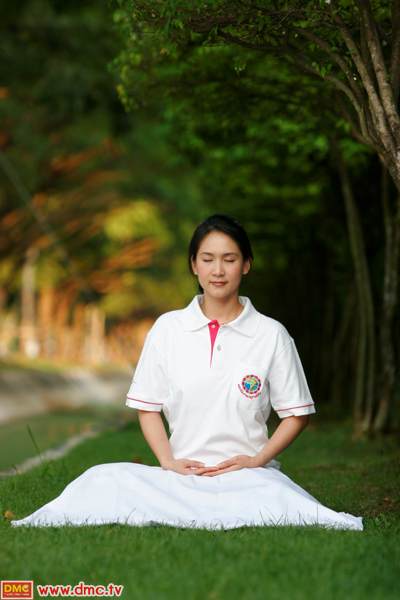
7. Throughout the day creating the feeling that you are united with the mental object at the center of the body – creating the feeling that we are inside the mental object, the mental object is inside us, we are united with the mental object and the mental object is united with us:
If for the whole day our mind is united with the skilful state of mind represented byour mental object, the quality of the mind will be upgraded the whole of time. Our life will be secure, our health will be good. Our mind will be nourished by the positivity at the center of the body all the time. Being inside the mental object means that our body is protected by the positivity of merit flowing from our good deeds in the past, through the centre of our body. This brings a bright, secure and healthy life because the Nirvana is of a nature beyond birth, old-age, sickness and death. Immersing our mind constantly in the merit coming from Nirvana, our life will be refreshed, inspired and healthy with a lifespan longer than usual. Being constantly centered gives us the mindfulness to avoid succumbing to the temptation of behaving badly. The feeling that we are united with the mental object at the center of our body will protect us from danger and make sure we do nothing to harm ourselves or others. The purity of the mental object at the center of our body will all good things of similar purity into our lives bringing us safety, dignity, prosperity and abundance.
Benefits to practitioner
1. Enjoying security and abundance in life as a result of all the merit we have been inspired to accrue.
2. Inspiration of mind and the mindfulness to be a teacher to oneself at all times.
3. Meditation which progresses with every second that passes.
4. Full integration of spiritual practice into daily life.
5. Not a breath passes by without our furtherment of virtue.
6. Being trusted by others.
7. Safety and security wherever one goes.
Benefits to others
1. Peace and harmony in family and society.
2. Prosperity, praise and progress of all in the community.
3. Those in the midst of those advanced in their Dhamma practice will find they benefit indirectly from that person’s high level of merit.
Details of practice
Imagine that the dome of the sky above is a huge Dhamma sphere which envelops us as if the centre of our own mind is aligned with the centre of this huge sphere of Dhamma. Every time we look up at the sky, we should remind ourselves that we are within that Dhamma sphere – and this will help ensure that our mind is centered the whole of the time. As for imagining that the mental object is inside ourselves, we should simultaneously imagine that a tiny mental object, the size of the tip of our little finger is located at the centre of our body as if we have swallowed it down inside our stomach. Once there, we should imagine it frequently. Habitual practice will result in the mental object enlarging until it becomes the same size as our own body – at which point we will feel as if we are one and the same as the mental object. Mastering this feeling by regular practice, our mind will never drift away from the meditation and the merit will flow in an unbroken stream at our center.
8. Take one minute of every hour to still your mind and think of the mental object (crystal ball or Buddha Image) or still the mind at the center of the body:
Throughout our waking hours of the day except the sleeping time, we must train ourselves to be intimately connected with the inner experience at the center of our body. Item seven of the homework (described above) helps improve on the general quality of our awareness by setting boundaries and cultivating mindfulness. This eighth item of homework; however, builds on these skills refining our meditation in a more focused and specific way. It helps to make sure that the merit flowing at the center of our body nourish our mind us for at least a minute of every hour. At least once each hour we have the opportunity to align ourselves with the stuff of Nirvana. Doing this item of homework will not only result in a constant flow of merit but also will increase the merit flowing through us hourly. Every activity in our lives causes us to use up merit we have stored up for ourselves in the past, therefore thinking back to the center of our body once every hour, helps in no small way to replenish some the merit we have lost. If the hour that passed by was already full of good deeds this practice will help to consolidate and multiply the merit accrued even further.
Benefits to practitioner
1. Our mind will become better able to stay at a standstill at the center of the body with the results of our meditation improving accordingly.
2. When we sit down for a formal meditation, our mind will come to a standstill more easily, facilitating the entry of the mind upon the central axis or ‘Middle Way’.
Benefits to others
1. Society in the midst of a person practicing this item of homework will be secure and peaceful.
2. Those coming in regular contact with the practitioner will find their lives becoming more peaceful, tender and fulfilling as an indirect result of that person’s practice.
Details of practice
Besides having the intention to practice this item of homework once every hour, it helps to set one’s wristwatch to beep once an hour or to set one’s mobile phone to vibrate or light up – as a reminder. As soon as you notice the signal, think of the mental object at the center of the body and bring your mind to a standstill at the center of it. If one practices in this way regularly, before long the mental object will start to arise in the mind automatically – and our mind will come to an immediate standstill.
Once one becomes more adept in the practice, merely turning our attention inwards will cause the mental object to enlarge to the size of the horizons. When this happens, a new mental object, brighter and clearer than the last, will arise at the center, allowing the mind to come to a standstill on a deeper level.
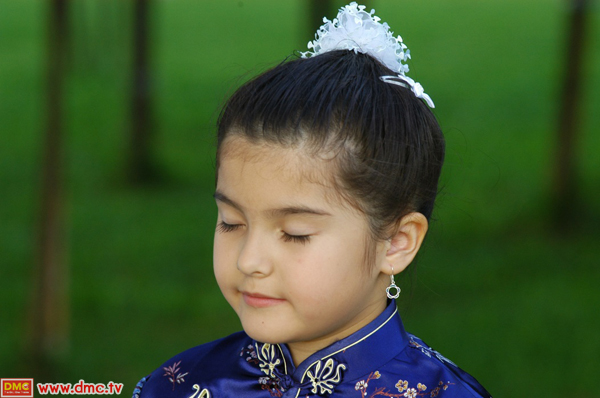
9. Recollect the mental object (crystal ball or Buddha Image) at the center of the body while conducting other activities throughout the day:
This means being observant of the inner experience at the center of the body no matter where we are, what we are doing or when we are doing it. We might imagine a crystal ball at the center, or a Buddha Image – or alternate between the two. The purpose of the practice is simply to train the mind to concentrate at the seventh base of the mind to enhance the focus and continuity of our meditation. Doing this item of homework helps avoid entangling our mind in unwanted issues and may reduce the severity of retribution of negative karmic deeds we may have done. The practice also facilitates the continuous flow of merit in the mind helping our inner experience to become brighter and clearer as time goes on.
Benefits to practitioner
1. Decreased unwholesomeness and increased wholesomeness in our lives.
2. Ensures the mind is always bright and clear and that our life is secure.
3. Protection from calamity. Reduction or cessation of suffering in life because the mind is always connected with the most positive of inner experiences at the centre of the body.
Benefits to others
1. Reduced interpersonal conflict.
2. More productivity at work in the absence of daydreaming.
3. Peace and security in life as a result of continuous immersion of the mind in the stream of merit flowing there.
Details of practice
Think back to the mental object at the center of the body as frequently as possible no matter where you are or what you are doing. Consider what would happen if one were to die in the state of mind one is in at that moment, and this will give us a sense of urgency to make sure our state of mind is always the most focused and refined possible. Besides making sure we are always prepared, even in the face of death, such a practice also facilitates group harmony.
10. Make a world a nicer place to live in by smiling and speaking in an endearing way:
This means making the effort to preserve a positive and constructive mood for ourselves and those around us. Thailand has become known as the ‘land of smiles’. However, even in Thailand, not to mention other countries of the world, with so much economic and social change, smiles are becoming harder to find and much of the compassion has been lost from the things people say to one another. As a result, we have to try to go against the tide by smiling and using only endearing speech – even if we are the initiators of this trend. When we smile and speak endearing words, others will feel good and return the smiles and pleasant speech to us. This cause makes the world a nicer place to live in and is certainly more conducive to mental development.
Benefits to ourselves
1. Facilitates the qualities of peace and gentleness of mind.
2. Trains us to be compassionate.
3. Causes us to center our mind in the meritorious aspects of life.
4. Helps preserve the level of inner experience one has already attained.
5. Shows strength of character on our part.
6. Minimizes interpersonal conflict.
Benefits to others
1. Minimizes conflict amongst group, organization, society or family members.
2. Sets a trend of gentleness and compassion in society.
3. Facilitates harmony.
Details of practice
Start by conjuring up merit in your mind as detailed in items 7-9 of the homework. Remind yourself that nobody wants to see a grumpy person or listen to sarcastic, slanderous, devious or vulgar speech. Realize that having a neutral or sulky expression reduces the benefits we get from the meritorious deeds we have done – and that unwholesome speech betrays a lack of quality in our mental state. Whenever you have a smile on your face or speak in an endearing way – you will be the first person to receive the benefits.






